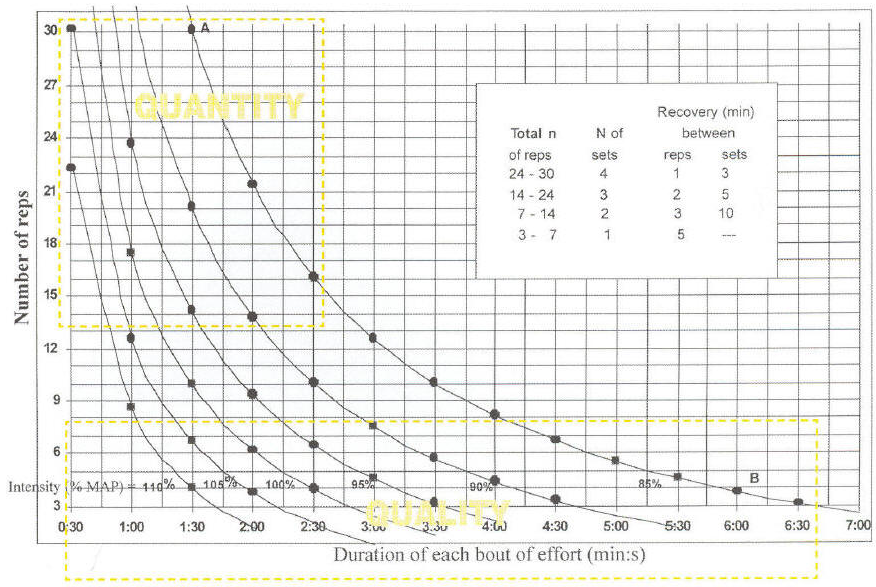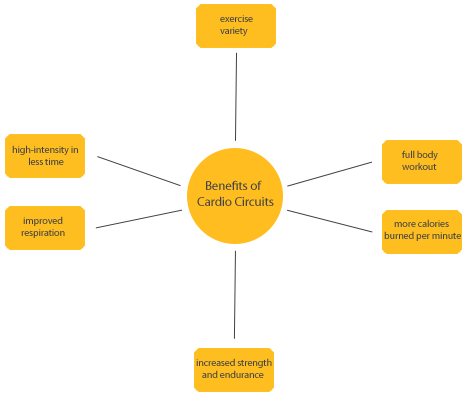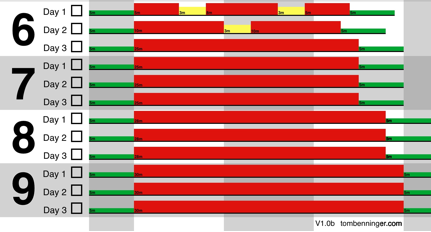Speed Training – Long Intervals
August is shaping up to be a different kind of month for my running. The Queens Half shaved 5 min and 22 sec off from my previous half marathon and that’s pretty significant. Especially, considering that I’ve done nothing but run slower most days… in the heat. I guess heat adaptation does count for something 🙂 At this point, I know that I’m comfortable with the 13-mile distance… it’s speed that I’m seriously lacking. So I’m wondering: what’s the best way to build up speed, given a goal of sustaining that faster pace over a prolonged distance?
I looked around and found a very interesting Danish study on “running economy” wherein scientists found that “long” intervals are the most beneficial when it comes to increasing speed and running efficiency; and long, being 5 reps of 4 minute intervals 3x a week at a pace faster than your 5k race velocity. The study identified the following improvements as a result of the experiment:
HR decreased by 10 BPM
Lactate levels decreased by 27%
VO2 Max increased by 6%
Running economy improved by 3%
Their overall conclusion was that brief, high intensity runs caused a dramatic increase in leg muscle strength and had a significant impact on improved neuromuscular coordination. They also attributed the increase in running economy to ventilatory adaptation; basically, you don’t breathe as hard while running – that’s pretty much the key to diminishing your perceived exertion!
I’ve also noticed that with intervals, it’s like you’re teaching your body to eventually get used to various training intensities over time. Whereas, if you think of a tempo run, it’s like you’re training yourself to sustain a specific speed over a long distance. With intervals, you can really max out your speed because it doesn’t last that long – that’s a lot harder with tempo runs that can go on for 6-8 miles. Although, you’re also at higher risk for injury if you’re not careful with interval training – some runners will just keep pushing to see how much faster they can go. Below is a pretty useful graphical model for interval training created by Guy Thibault, Ph. D. (an exercise physiologist):
The important thing to keep in mind is that intervals are supposed to help gradually push lactate threshold, in order to maintain physical activity (during the recovery part) even when there’s already some lactic acid build up present in the bloodstream.
Although, with the higher intensity workouts, I’ve been feeling more tired lately. I’ll need to be very conscious of my rest days!




That’s some pretty good science, though I’d be afraid to do three interval sessions a week. I know I’d just fall apart. I know I get the best out of intervals if I wear a heart-rate monitor and do enough intervals (usually 5 to 8) where my heart rate is in the 85 percent or higher range for at least 20 minutes (not for each interval, but for the total workout).
hmm.. I should probably keep my HR monitor on me at all times. I didn’t even think about that! Perhaps, I should also scale back.. it really is a better idea to ease in to it..